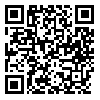BibTeX | RIS | EndNote | Medlars | ProCite | Reference Manager | RefWorks
Send citation to:
URL: http://jdm.tums.ac.ir/article-1-5529-en.html
2- Assistant Professor, Department of Prosthodontic, Islamic Azad University, Dental Branch
3- Dental Student, Islamic Azad University, Dental Branch, Tehran
4- PhD Occupational Health
Background and Aims: Constant dynamic and static activities are considered as the main cause of musculoskeletal problems among dentists. The aim of this study was to evaluate the musculoskeletal problems and related factors among dentists in specialized clinics and dental schools in Tehran in 2014 using the REBA method.
Materials and Methods: In this cross-sectional study, the dentists from clinics of dental schools in Tehran were selected as individual targets. Nordic anddemopghrphic questionnaire were completed through interview from dentists. In order to assess the musculoskeletal disorders, REBA method (Rapid Entire Body Assessment) was used. In this method, positions and postures of the dentists during their work was observed and recorded. Data was analyzed using Regression Logestic test.
Results: The obtained results showed that among 100 dentist, 6% were in the very high risk (15-11) for musculoskeletal problems and 17% and 25% were in high-risk (10-8) and average risk (7-4), respectively. Based on the findings from Nordic questionnaire, the most skeletal- muscle travail were related to the neck (60%), lumbar (58%) and rear (46%) consequently. It seemed that factors such as gender, body mass index (BMI), height, specialty, body posture during the work (standing or sitting), smoking and using the direct or indirect vision, had an impact on the musculoskeletal disorders.
Conclusion: Findings from the final scoring of REBA showed that a high percentage of dentists were struggling with skeletal- muscle problems and they were in moderate to high range of risk for these type of disorders.
Received: 2016/11/7 | Accepted: 2016/11/7 | Published: 2016/11/7
| Rights and Permissions | |
 |
This work is licensed under a Creative Commons Attribution-NonCommercial 4.0 International License. |




